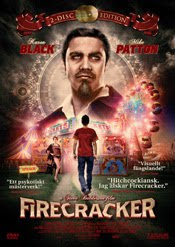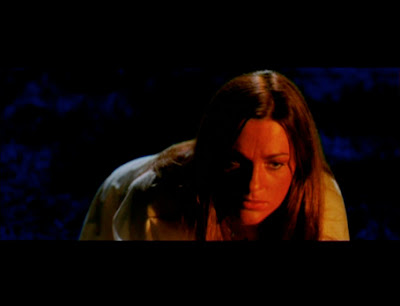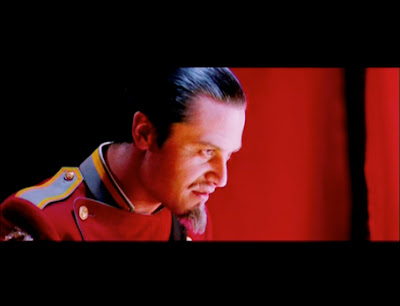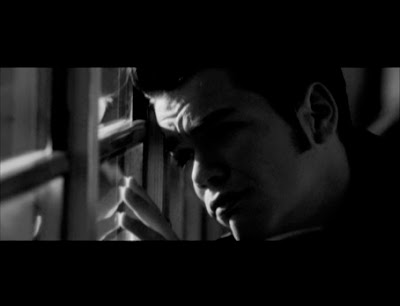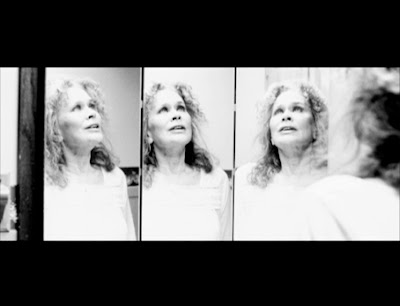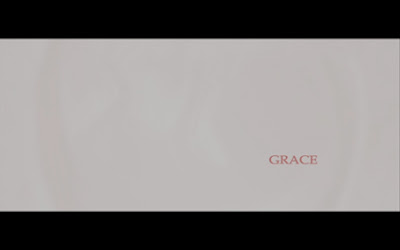

Dawn of the Mummy
Directed by: Frank Agrama
USA/Egypt/Italy, 1981
Horror, 93min
Distributed by: Lazer Paradise OOP
(But Anchor Bay edition is the superior release)
Egyptian curses, a mummy, an army of zombies, hot models, exploitative photographers, sinister tomb raiders, gore galore and some grand location work in Egypt are just some of the finer elements in Frank Agrama’s delightfull low budget shock flick Dawn of the Mummy. One of those classics that I’ve been going back to over and over again in the last two decades as there’s something very satisfying with it, and for the nostalgic buzz it was one of the first tapes I bought from the Psychotronik Video in Camden back in the day.

Starting out with a set up in 3000BC, a band of horseback whipping bastards ride into a crowd of people and thrash the living hell out of them. Crash cut over to the funeral of Safirman who is being buried in a very royal fashion – mummification complete with entrails drawn out of stomach and all – although I’d have loved to see a rod up the nose to jiggle out the brain in there too, but no such luck this time. A high priestess [Laila Nasr] rambles out some chants and a curse upon anyone who disturbs Safirman’s tomb, as the slaves hang their heads and breath in the venomous gas that will take them to the land of the dead with their master… and seal them in the tomb so that they can come back as his army of the resurrected if his eternal rest is disturbed. It’s corny, but establishes two things. The whipping of unfortunate slaves in the opening hint at how frigging mean – as in feared - Safirman was when he was ruling, and the funeral preparations show us just how powerful and important he was as he’s getting the supersize treatment even in death.
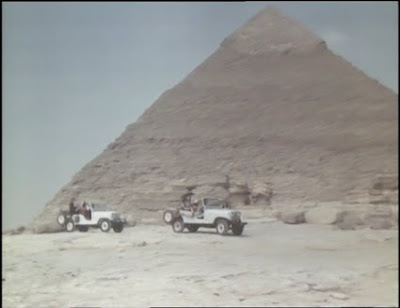
Jump forward in time…something like four thousand nine hundred and eighty one years to be precise and a group of tomb raiding sons of bitches are trying to find the grave of Safirman and plunder it of all the gold that’s obviously going to be there. Despite the several millennia that have passed the high priestess is still warding off potential intruders as she now roams the dunes as a toothless old hag. But suave treasure thieving yank Rick [Barry Sattels] and his stooges are not having any of it and merely mock her warnings. They go about their search, and the old biddy manages to lure some sad native Egyptians to go down to the tomb and guard it, but obviously the curse gets the better of them and as one of them has his face torn of the others run to the hills. There’s no need to mention that this all makes us realise that the curse is a very potent threat and we know that somewhere along the line Rick and his cohorts are going to awaken the vengeance of what lies buried in the sand… and we can hardly wait.

But just when you thought things couldn’t get better a merry troupe of photo models and team arrive at the sunny location and start to snap of a series of shots for their fashion spread. After Rick and his cohorts start blowing stuff up in the tomb as they search for the treasure, the models curiosity is awoken and they rush up to the spot from where the blasts where heard. A conflict of interests is presented as the cynical photographer Bill [George Peck] sees the fantastic opportunity presented to shoot his images inside a genuine tomb complete with sarcophagus, mummy and all the trimmings set design could provide…
This sets up the movie and presents the two main arcs that are going to run through the movie: Rick’s obsession with looting the gold, and the malevolent photographer who despite injuries and scary incidents pushes his models and team harder and harder in his urge to make an imprint… and that’s all before the mummy has even flipped open his eyes for the first time.
Bandits lurk in the dark prying secret doors and the fashion crew’s lights heat up the wrapped carcass of Safirman, and the moment we all have been waiting for finally hits us. Safirman get’s up out of his sarcophagus and starts taking his violent and bloody revenge. No matter how poor the script may be, or dopey the acting is, this is a potent movie with a pretty funky ethno score by Shuki Levy (who later composed the theme to the Inspector Gadget cartoon) which still manages to entertain and once the vengeance is served up it’s a jolly old riot that keeps on rolling until the last shocking confrontation between ancient and modern times.

Dawn of the Mummy is a enchanting movie. It really is, there’s no denying it, and it’s a fantastic piece of low budget exploitation that provides some great entertainment value. Being a co-production between the US, Italy and Egypt it’s mysterious cocktail of influences and styles… yeah it is. Acting is pretty shoddy, and dialogue is if possible even worse, but at the same time there’s an attraction oozing from this piece. I’ve seen it several times before and it’s still one that I like, despite all its silly little flaws. Because there is a magical potency to this movie, a one that appeals to most fans of low budget horror, and that magic is found in the stern Italian flavour that the movie holds. But make no mistake about it; Dawn of the Mummy is primarily an American movie, financed by American dollars, starring American actors (well most of them at least) and holds several references to American culture. There’s even a Casablanca reference in there if you know where to look. Agrama is an American too, even if he has an Egyptian background, which most likely came in handy as he arranged all the catch22-esque paperwork to film on location in Egypt and yelled at the Egyptian cast and crew recruited from the area.

But it’s mainly those few Italian participants that shove the movie over the edge and gives it that significant atmosphere synonymous with Italian genre pieces. The cinematography of Sergio Rubini - who worked with directors ranging from Pasolini to Stelvio Massi and Michele Massimo Tarantini, and shot the Lucio Fulci produced Gianni Martucci movie I frati rossi (The Red Monks) 1988 – definitely brings the compositions up a notch. It wasn’t until this last time I noticed how detailed some shots are, but I’ll get back to that later. The cinematography is solid and reliable, and would probably have been something completely different if the Agrama had gone with an all-Egyptian crew. The same goes for the special effects and makeup departments. If not for Luigi Battistelli and Maurizio Trani – who together have a stunning resume and some solid exploitation gold on their back catalogue – I’m quite convinced that we wouldn’t be talking about this movie still thirty years on. There’s no doubt in mind when I say that everything Trani saw whilst working on those classic Fulci movies was brought to the table in Dawn of the Mummy and made those zombies and that mummy the visuals that they where. The head wounds, the bites, the monster makeup, the magnificent mummies rising from the sand, the gore drenched wedding buffet, they are all moments that simply reek Italian exploitation. Images that in all honesty make the movie what it is. In a humorous note it would be fair to say that the one vital ingredient lacking to sell the illusion of a full-fledged Italian exploitation fare completely is that there’s a painful absence of spontaneous nudity. But shooting a movie in a country restricted by laws and religion will obviously bring limitations, which Agrama clearly learned all about during the shoot, but the Italians wouldn’t have cared less and would have had all those babes in the flesh anyways.
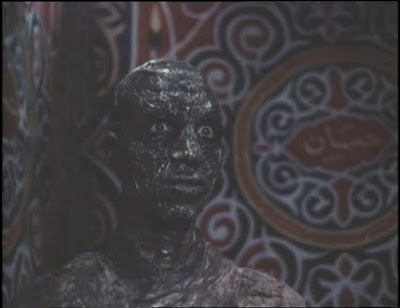
On that cinematography by Rubini - there are some wonderful details that I noticed when watching this movie again this past weekend and that was the amazing attention to detail that is seen in the scenes taking place in the village. There’s no sloppily setting up the camera and shooting the actors delivering their lines, but instead the frame is full of activity and movement, the shots hold an aura of actually being in an authentic village where the villagers are going about their everyday life. There’s background action, foreground action and a striking amount of stuff going on, camels being paraded through the back of shots, kids chasing each other and shoppers walking through frame, and my favourite – as Ahmad [Ahmed Laban] invites Gary [John Salvo] to his wedding – the three blokes that park a bike, flip it over and start fixing the tires right in front of the framing. Brilliant! It’s some pretty neat details that I haven’t noticed until now. It gently shoves Agrama’s abilities as a director and the movie up a notch in my book.

Agrama also suffered a fate similar to that of Enzo G. Castellari and his L’ultimo squalo (Great White) 1981 which was barred by Paramount when they found it a close to comfort to their Jaws franchise. But Agrama actually had this happen too with the movie that predated Dawn of the Mummy, Queen Kong 1976. Queen Kong being another shameless multi European co-production that simply tried to cash in by tagging along in the wake of Dino De Laurentiis 1976 remake of the RKO classic King Kong 1933, was obviously stopped by Dino and RKO, making it more or less unavailable since they reached an agreement out of court. Never the less, a movie stopped by an classic movie studio and a perhaps even more infamous producer like De Laurentiis definitely doesn’t just vanish, even if it was kept off the cinema screens globally, it lives on in the sole of all fans of obscure cinema and the wonderful realm of bootlegging. Ironically the movie did play for a short while in Italy where they live by a complete different set of copyright laws, something that we fans of obscure low budget remakes have been thriving off for the last couple of decades.
More recently Agrama was one of twelve people charged by prosecutors in Milan for tax fraud and tampering the books of the Italian media company Mediaset. Amongst the dirty dozen charged was also Italian Prime Minster Silvio Berlusconi and the case was later partially dismissed… Mr. Untouchable strikes again.
So all in all, there’s a fascinating story in Farouk Agrama, not only as the COE of Harmony Gold USA (no stranger to controversy either), the producer of some marvellous TV serials and movies, or the director of five curious movies - but also a daring man who despite it all managed to make a name for himself and still to this day is highly active in the movies.
But Agrama’s legacy is superbly encapsulated in that guilty sin of a movie Dawn of the Mummy, a delightful piece of low budget exploitation that still manages to keep me in a great mood on each repeated viewing.







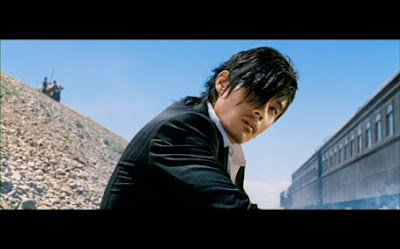





 The Good, The Bad, The Weird is a movie that easily will appeal to fans of Asian action, Bullet ballets, and good old Westerns with a spicy South Korean taste to it. I never really got the hype around Ji-woon Kim’s A Tale of Two Sisters 2003, as it always felt to me as a so-so movie and not really as good as others made a the same time. But I really liked his entry into the first Three series – Memories 2002, and A Bittersweet Life is mind blowing. So The Good, The Bad, The Weird comes as a pleasant surprise. It’s of the lighter nature than his previous pieces, and is without any exaggeration a d fantastic action adventure movie that you should make sure to check it out, because it is a magnificent movie.
The Good, The Bad, The Weird is a movie that easily will appeal to fans of Asian action, Bullet ballets, and good old Westerns with a spicy South Korean taste to it. I never really got the hype around Ji-woon Kim’s A Tale of Two Sisters 2003, as it always felt to me as a so-so movie and not really as good as others made a the same time. But I really liked his entry into the first Three series – Memories 2002, and A Bittersweet Life is mind blowing. So The Good, The Bad, The Weird comes as a pleasant surprise. It’s of the lighter nature than his previous pieces, and is without any exaggeration a d fantastic action adventure movie that you should make sure to check it out, because it is a magnificent movie.

